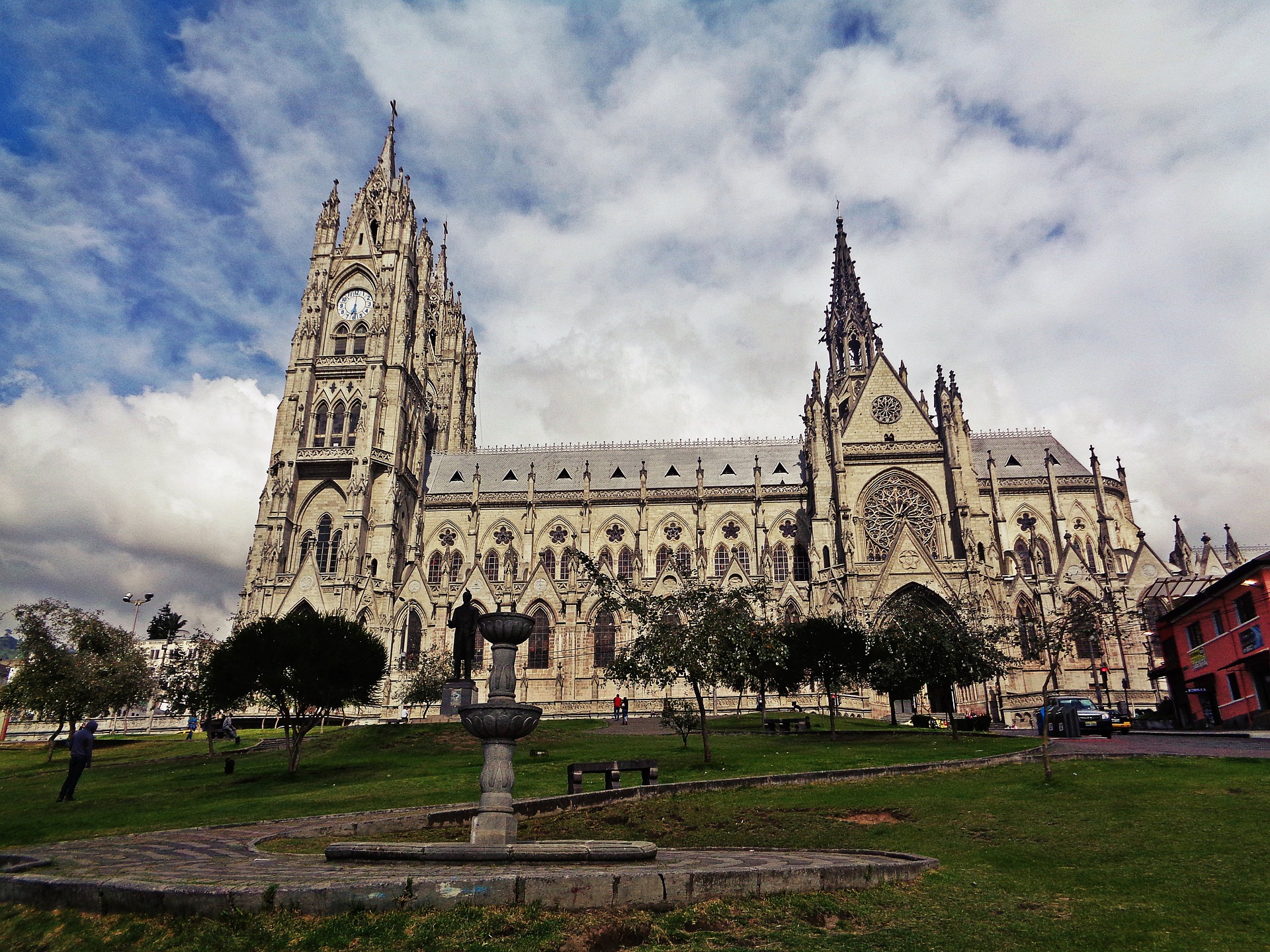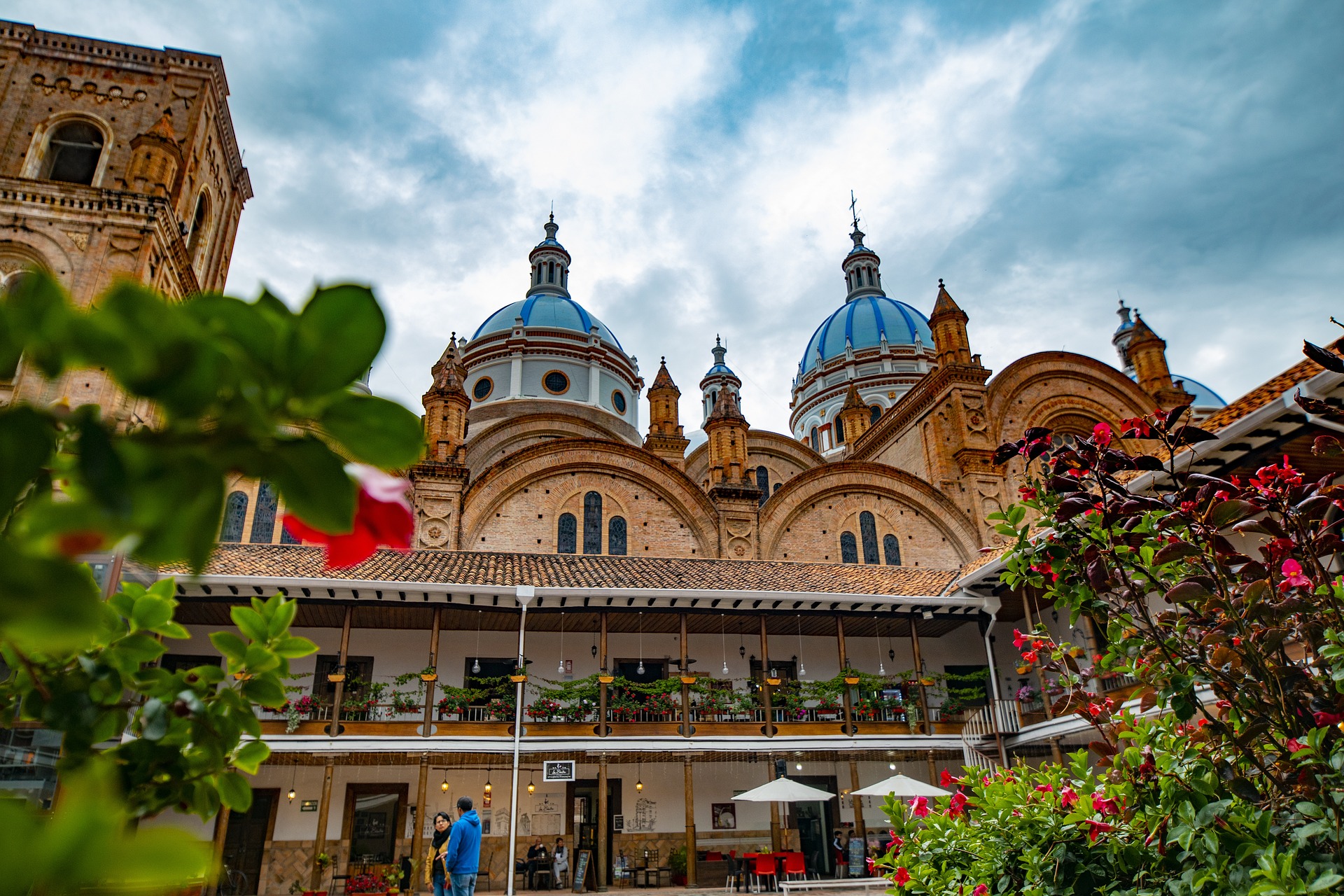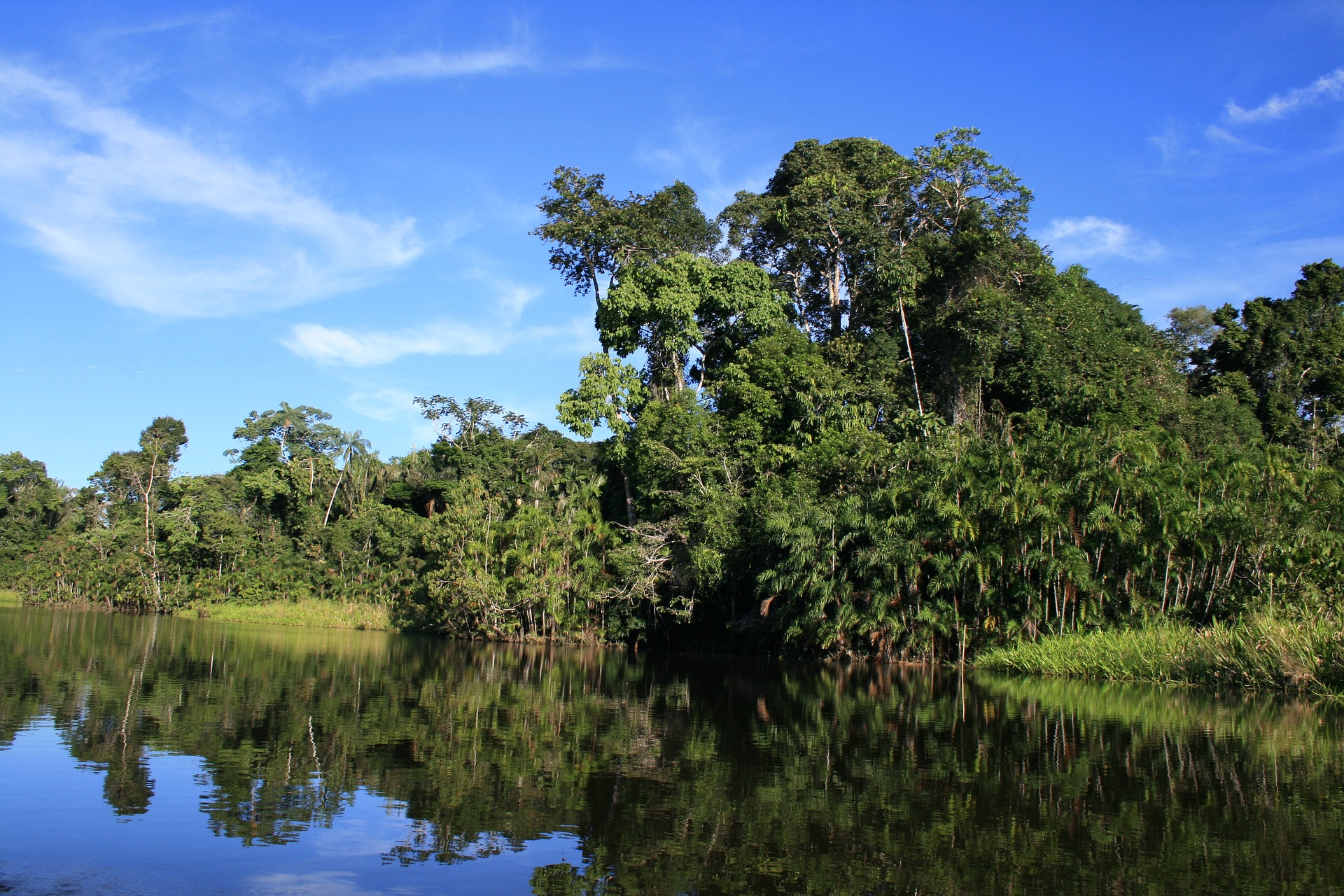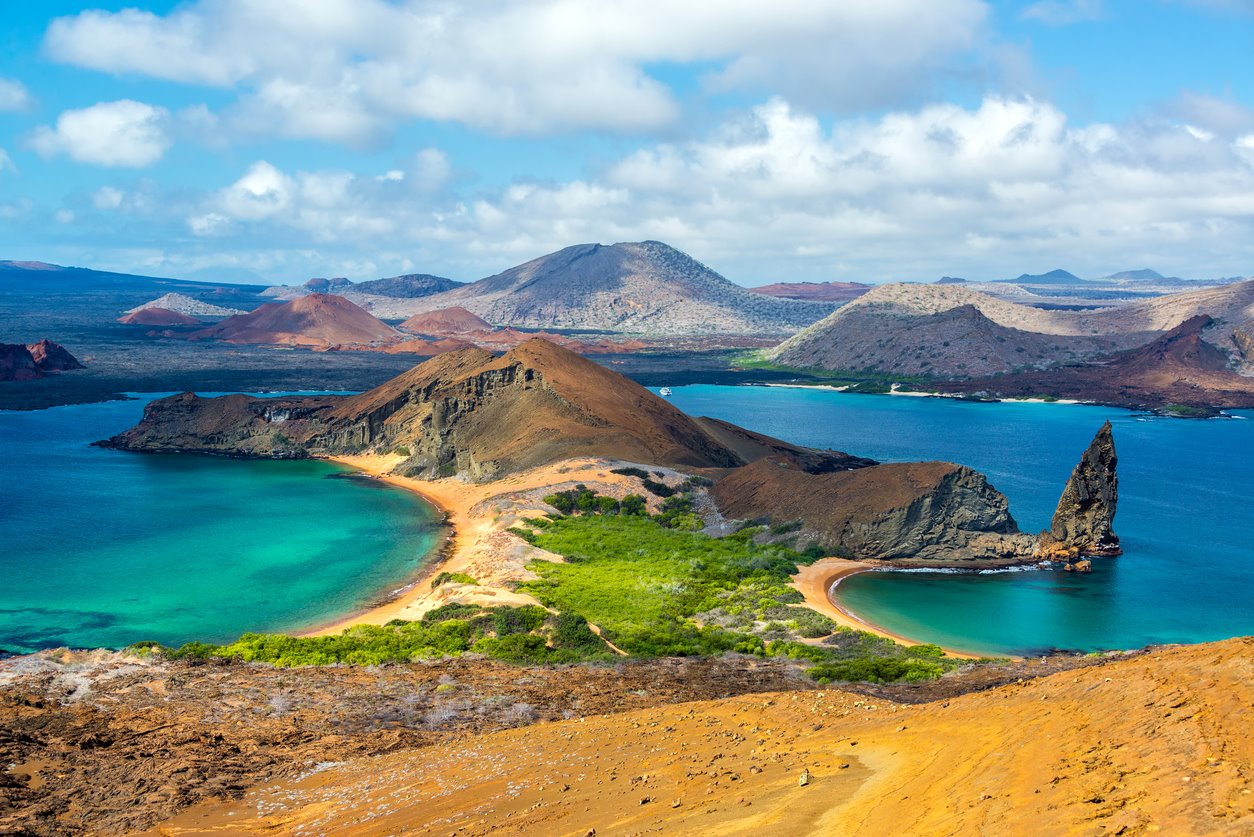Ecuador, located in the charming northwestern region of South America, is a destination for lovers of nature, culture and adventure. It is nicknamed “The Country of the Four Worlds” since it has great geographic diversity, ranging from the Pacific coast to the Amazon jungle, passing through the majestic Andes and the impressive Galapagos.
What makes Ecuador a unique destination?
The Galapagos Islands – There is literally no place on Earth like the Galapagos Islands. Due to their almost total isolation and the lack of human settlements until relatively recently, the flora and fauna of these islands have evolved in a very special way giving rise to species that are often not found anywhere else in the world, such as marine iguanas, tropical penguins, giant tortoises and blue-footed boobies. Furthermore, the animals have not known humans as predators, and therefore are not scared of people like other animals. This means that you can observe them more up close and personal as they allow you to.
Biodiversity – With 46 different ecosystems, Ecuador is one of the most biodiverse countries in the world, and not only in the Galapagos Islands, but on the continent as well. Ecuador has more than 1600 species of birds, which is more per kilometer than any other country in South America. In addition, Ecuador has 4.500 types of butterflies, more than 3.000 species of orchids and a total of more than 25.000 species of plants, which is 10% of the world's total. Ecuador offers many opportunities to observe all its biodiversity, through national parks and ecotourism.
Cultural diversity – In addition to Ecuador's biodiversity, it is also very culturally diverse. Approximately 65% of the population is mestizo, that is, a mixture of Indians and Spanish, while 25% are indigenous, and the remaining 10% are of other ethnicities, including people of African descent. There are 15 recognized indigenous groups in Ecuador, which speak 11 different languages. These groups vary greatly depending on the particular geographic region and each have their own special customs and traditions to share.
geographic diversity – Although this factor is related to biodiversity, it is not absolutely the same. Ecuador is made up of four regions: Galapagos, Coast, Andes and Amazon. Each region has its own climate, activities, flora, fauna and spectacular landscapes. This great geographical diversity packed into one country means that, on a trip to Ecuador, you can dive with a sea lion, lounge on the beach, climb to the top of a snow-covered mountain, and canoe down a river. from the Amazon jungle; all this in less than 1 hour of flight between each destination. This makes Ecuador ideal for travelers who can't decide where to go on their next visit and simply want to do everything.
Little size – The best things come in small packages, and this is certainly the case in Ecuador. Not only does Ecuador have all the diversity mentioned in the last three points, but it is located in an area the size of the state of Nevada or the United Kingdom plus Belgium. This means it's easy to explore all that diversity in a short period of time and makes traveling within the country quick and flexible. Larger countries have more dispersed main attractions, and require careful planning to visit everything the traveler wants. However, in Ecuador, there is nothing further than a 14-hour bus ride from the capital, making your trip planning as flexible as possible.
Good weather – Being on the equator, Ecuador enjoys relatively the same climate all year round. Of course, climate and temperature change exists between different regions and altitudes, but in general, Ecuador offers very good weather all year round. The highland region is very temperate, as it is located on the equator, but at a higher altitude, giving a climate very similar to spring. This can sometimes mean rain, but it is usually sunny all year round. The Coast and the Amazon are much warmer, but also quite constant throughout the year. All this means that there will never be a bad time to visit Ecuador.

SIERRA
Observed from above, the Ecuadorian Andes display a collage of colors, as if nature had woven its own tapestry over them. In the Andean peaks, the afternoon sun covers extensive areas of pristine moors, while further down, in the valleys , illuminates fields of corn, barley, wheat and quinoa, dyeing them with golden, amber, lilac and amethyst reflections that change as the fickle clouds pass by. In the Andes, lands of eternal games of light and shadow, nature and human activity, there is no day that is similar to the other.
Considered the most important region of Ecuador and commonly called the Sierra, it is the most visited in the entire country. Its great natural and cultural diversity encompasses moors, cloud forests, lakes, active volcanoes, hot springs, indigenous markets, cities, towns and colonial haciendas.
quit: The heart of Quito is its Historic Center, a labyrinth of cobblestone streets where each corner tells a story. Quito became the first city to be declared a World Heritage Site by UNESCO, home to architectural treasures, such as the Church of the Company of Jesus, a baroque masterpiece with golden details that dazzle visitors. The Metropolitan Cathedral and the Plaza de la Independencia are also obligatory stops.
For a panoramic view of Quito, head to Panecillo, a hill that rises above the city. Here, you will find the statue of the Virgin of Quito, which becomes a focal point both day and night. The panoramic view of the illuminated city is simply impressive.
The museums in Quito offer a window into the country's rich history and culture. The National Museum of Ecuador and the City Museum present exhibits ranging from pre-Columbian art to contemporary art. Additionally, the Middle of the World Museum celebrates Ecuador's unique location on the equator.
Basin:
Cuenca, located in southern Ecuador, is a charming city that combines colonial elegance with a vibrant artistic and cultural environment. Declared a UNESCO World Heritage Site, Cuenca is known as the “Athens of Ecuador” due to its rich history, splendid architecture and its crucial role in the artistic and cultural development of the country.
The Historic Center of Cuenca is a true architectural treasure. Cobblestone streets, charming squares, and well-preserved colonial buildings transport visitors to a bygone era. The Cathedral of the Immaculate Conception, with its distinctive blue domes, is a city icon and a stunning example of Renaissance architecture.
The city is home to numerous churches and convents that tell fascinating stories. The Church of San Francisco, for example, is one of the oldest in the city and has an impressive baroque façade. The Monasterio de la Concepción, built in the XNUMXth century, is another highlight with its ornate cloister and religious museum.

COSTA
The Ecuadorian Coast welcomes travelers seeking outdoor entertainment all year round, with more than 1,600 km of endless tropical beaches. Bathed by the waters of the Pacific Ocean and with a wonderful climate, it is the favorite destination of travelers seeking outdoor adventures, particularly surfers.
The beach season (January to May) offers sunny days in the morning and light rain in the afternoons. This is the best time to visit the South Coast and Central Coast.
The dry season (June to December) is cooler and sometimes cloudy, but offers the opportunity for humpback whale watching especially in Machalilla National Park (June to October).
Puerto López: is a charming fishing town known for its relaxed atmosphere, beautiful beaches and its proximity to the Machalilla National Park, home to impressive biodiversity. In addition to being a popular destination for whale watching between June and September, Puerto López offers visitors the opportunity to enjoy delicious fresh seafood, explore its quiet streets, and participate in activities such as diving, snorkeling, and hiking along nature trails that lead to Stunning viewpoints and secluded beaches. Its authentic atmosphere and privileged location make it a must-see destination for those seeking to connect with nature and Ecuadorian coastal culture.

EAST
The Amazon rainforest is, without a doubt, the highest achievement of Creation. The Ecuadorian East, also known as the Amazon, is a region blessed with some of the most pristine and biodiverse areas on the planet. It could be compared to an impressive symphony of natural life. To experience it in all its splendor, just take a canoe trip along one of its meandering rivers, get on a canopy, walk along the open paths through its primary forests, learn the secrets of its medicinal plants, or simply visit its infinite forests.
Yasuní Biosphere Reserve: For all nature lovers, this biosphere reserve is a jewel within all the national parks of Ecuador. It is one of the most biodiverse and culturally rich places in the world, recognized for its exceptional variety of plant and animal species, many of which are endemic and in danger of extinction. This vast protected area is also home to diverse indigenous communities, whose ways of life are closely linked to the rainforest. In addition to its ecological and cultural value, Yasuní is crucial for climate change mitigation, since its extensive jungles absorb large amounts of carbon dioxide. However, it faces constant threats due to oil exploitation and other human activities. Its conservation is vital not only for the preservation of biodiversity, but also for the well-being of local communities and global environmental balance.

GALAPAGOS
The Galapagos Islands are a volcanic archipelago located in the Pacific Ocean, approximately 1,000 kilometers west of the coast of Ecuador. This group of islands, islets and rocks is world famous for its unique biodiversity and its historical role in Charles Darwin's theory of evolution.
The Galapagos Islands are home to an astonishing variety of flora and fauna found nowhere else on the planet. The isolated evolution of these species has led to the development of unique animals and plants that have adapted their characteristics to the specific conditions of each island. Among the most iconic species are giant tortoises, sea lions, marine iguanas, blue-footed boobies and flightless cormorants.
One of the main attractions of the Galapagos is the opportunity to go on excursions to observe wildlife up close. You can walk among bird colonies, swim with sea lions, and even be a few meters away from giant tortoises in their natural habitat. The fauna of the Galapagos is surprisingly friendly and little fearful of humans, allowing for unique and unforgettable experiences.
Additionally, the crystal clear waters surrounding the islands offer exceptional opportunities for snorkeling and diving. Discover an underwater world full of colorful tropical fish, manta rays, reef sharks and more. Some of the best diving areas include Wolf Island and Darwin Island, known for their hammerhead shark encounters.
The Galapagos Islands offer a unique experience in which nature and history intertwine in an amazing way. Exploring these islands is to immerse yourself in a world where wildlife welcomes you with curiosity and where every corner tells a fascinating evolutionary story. A trip to the Galapagos is more than just a vacation; It is an immersion in the wonder of life on Earth.


